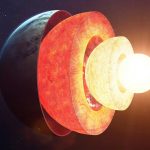The sun is the most significant star to us here on Earth. The sun benefits the planet every day by supplying the heat, light, and energy that we require to thrive even though it is a very normal star in terms of size and temperature. The sun is a massive ball of gases that are extremely hot, primarily hydrogen and helium.
The gases are drawn together by the star’s tremendous gravity, which prevents them from dissipating. A tremendously scorching atmosphere surrounds the sun and extends huge distances into outer space. The sun rotates slowly, finishing one revolution in just about a month.
The center, or core, of the sun is where temperatures are believed to exceed 27,000,000 degrees Fahrenheit. Hydrogen atoms are squeezed so closely together by the high heat and pressure in the sun’s core that they fuse to generate helium atoms, which releases a great deal of energy.
The photosphere is the visible part of the sun. The photosphere is extremely hot—about 10,000 degrees Fahrenheit—and glows with a bright light similar to a 100-watt light bulb’s filament. However, not all of the photosphere is that hot. Gas patches that are cooler than the rest of the sun’s surface are frequently present. These darker spots or blotches are known as sunspots and can be seen with specialized telescopes.
Please comment below with any questions or facts you have about the sun.







